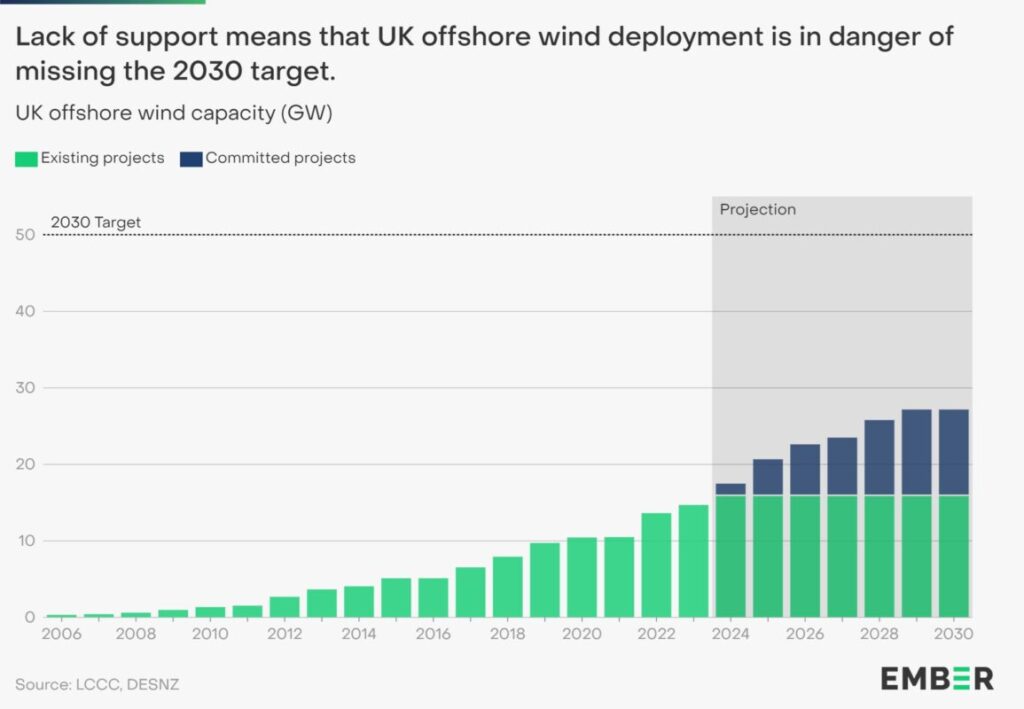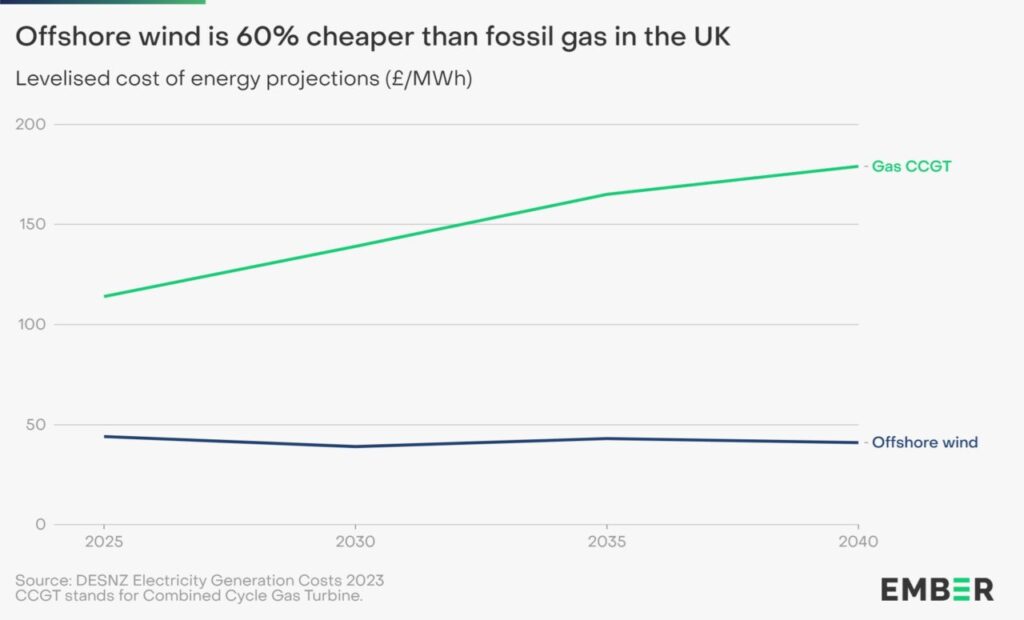A new report from energy and climate think tank Ember has warned that the UK’s offshore wind industry is at serious risk of missing 2030 capacity targets if urgent action is not taken.
The report, titled “Getting UK offshore wind back into fighting shape”, warns that, without policy intervention, the next Contracts for Difference (CfD) auctions for offshore wind will fall short of the needed commission volume to meet the 2030 installation target. The report states that around 10GW of offshore wind will need to be commissioned from both the 2024 and 2025 CfD auctions in order to hit the 2030 targets, but projects that only 3-5GW is expected to be supported through this year’s AR6 auction.
In 2019, the UK government set a target for 50GW of offshore wind capacity by 2030, and the report notes that the new Labour government has signalled a desire to increase this target to 55GW, plus 5GW of floating offshore wind, a move which Ember analysts have called “unquestionably ambitious”. With the current installed offshore wind capacity in the UK standing at 14.7GW, with another 13.3GW in construction or committed through secured government support, there remains a 22GW capacity shortfall that must be delivered by 2030 to meet targets.

Urgent CfD reform is needed
The report highlights the failure of last year’s AR5 auction, where strike prices were too low to attract any offshore wind bids, and urges the government to take immediate action before the August 1st pricing deadline for the upcoming AR6 auction.
Ember states that a 25% increase to the AR6 budget could deliver an additional 1GW of commissioned offshore wind on top of existing expectations, adding that every 1GW of offshore wind installed would displace annual fossil gas consumption by enough to heat 630,000 homes. The report commented that “this approach avoids the need for CfD structural change in the immediate term, and will help move projects at the front of the queue forward to development at a time of great uncertainty in the industry.”
Thinking about the long-term, Ember also made other policy recommendations for the new Labour government. Analysts are urging policymakers to evolve the CfD mechanism “to prioritise delivery, not a race to the bottom”, noting that practically all projects currently in the pipeline must be successfully built in order to meet targets. The report suggests that after AR6 and AR7, the government “explore profit-sharing mechanisms to both reduce consumer bills and lower the risk of setting the strike-price too high”, as part of an overall plan to “evolve the CfD process to move a large number of sites through development.”
The report also highlights potential opportunities for the new government to use offshore wind to achieve other policy priorities. Ember is pressing policymakers to implement long-term recommendations in the Offshore Wind Growth Partnership’s Industrial Growth Plan, which include improving the resilience of local supply chains and boosting green manufacturing jobs. Ember also notes that this would have a positive knock-on effect on employment, job creation, economic development, and energy security, all of which are stated as priorities by the new government. Ember’s data shows that offshore wind power is 60% cheaper than fossil gas power in the UK, meaning that increased offshore wind capacity could provide a significant price drop for UK households.

Frankie Mayo, senior UK energy & climate analyst at Ember and author of the report, sums up the urgent need for offshore wind development quite simply, stating: “The newly elected government has just 3 weeks to boost the budget and make the next auction process a success.
“Every additional wind turbine built reduces exposure to volatile fossil fuel markets and provides cost-competitive power.”

